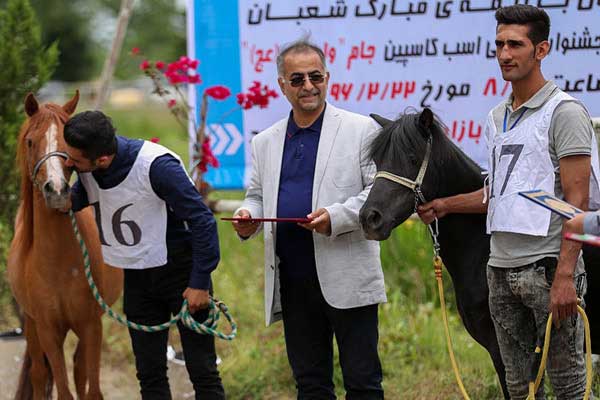Two experiments were conducted to evaluate the impact of four extenders and different centrifugation protocols on cooled preservation of Caspian poney semen.
Houshang Nouri , Cornell University
Armin Towhidi , University of Tehran
Majid Bahreini , Animal Breeding Center Karaj Iran
Conference Paper
Abstract
The use of cooled transported equine semen continues to gain popularity among breeders as its acceptance increases among breed registries.
Two experiments were conducted to evaluate the impact of four extenders and different centrifugation protocols on cooled preservation of Caspian poney semen.
Comparisons of some extenders have been made but there is need for further research in this area. In experiment 1; Extenders tested included EZ-mixin (Minitube, Germany), Kenney’s (Minitube, Germany), INRA96 (IMV, France), and CPE (Caspian pony extender).
Semen was collected from 4 adult Caspian poney with Missouri artificial vagina equipped with an in- line nylon filter to exclude gel from the semen sample and each ejaculate was divided and extended in each of the aforementioned extenders and stored at 4C˚.
Motility measures were determined using computer-assisted sperm analysis at 0, 24, and 48, hours after collection.
Samples were evaluated for total motility, progressive motility (PM), straight-line velocity, curvilinear velocity, straight-line distance.
Total motility and PM decreased over time in storage (P < 0.05). Sperm stored in INRA 96, and CPE retained the most total motility and PM over the 48 hour period (P < 0.05). CPE had the highest measurements for curvilinear velocity, straight line velocity, and curvilinear distance (P < .05).
In experiment two:
The objectives of this experiment were to determine the effects of centrifugation on Caspian poney sperm progressive motility, viability, and plasma membrane integrity.
Ejaculates from four Caspian ponneis were collected, extended (CPE) to a concentration of 50 × 106 cells/mL, and subjected for 4 and 7 min to: 1) no centrifugation (NC); 2) 500 × g (500); 3) 1000 × g (1000); and 4) 2000 × g (2000).
Before and after centrifugation (Day 0), and after 24 and 48 h of cooling, sperm motility was assessed by computer assisted semen analysis, and samples were stained with Eozin negrosin for viability, and with Hypo-osmolarity swelling test (Host) for membrane integrity.
Compared with the other treatment groups the 2000 treatment group showed reduced motility, viability, and membrane integrity (P<0.05).
The uncentrifuged samples, Compared to 500 and 1000 treatment groups centrifugation of semen resulted in a better sperm quality after chilled storage.
The 500 and 1000 treatment groups yielded lower recovery rates than the 2000 treatment group (NC= 100.0 ± 0.0%, 500 for 4 min = 44.49 ± 3.6%, 500 for 7 min = 55.06 ± 2.3%, 1000 for 4min = 62.4 ± 2.98%, 1000 for 7min = 75.89 ± 2.14% 2000 for 4min = 78.48 ± 1.56%and 2000 for 7min = 89.53 ± 4.31%) (P<0.05). Centrifugation at 1000 × g for 7 min did not damage Caspian poney sperm

